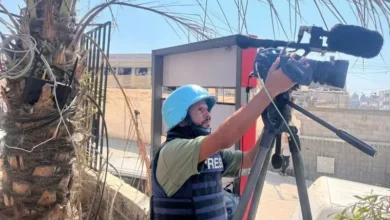UKLFI Review Finds Reports of Famine in Gaza were Erroneous

UKLFI Charitable Trust a British law group has published a detailed examination of reports of famine in Gaza on which the UN Secretary General, the International Court of Justice (ICJ) and the Prosecutor of the International Criminal Court (ICC) have relied in proceedings relating to Israel. The analysis reveals significant errors, methodological flaws, and misrepresentations.
The reports were produced by the Integrated Food Security Phase Classification (IPC) established by the UN Food and Agricultural Organisation (FAO) and the Famine Early Warning Systems Network (FEWS NET) established by the US Agency for International Development (USAID). The operations of FEWS NET and USAID have recently been suspended by the US administration.
Key Findings:
1. No Actual Famine – Despite alarming projections, there has been no famine, as defined by IPC standards, in the Gaza Strip since October 2023. Acute malnutrition levels are only marginally higher than pre-war figures.
2. Flawed March 2024 Reports – IPC and FEWS NET reports from March 2024 projected an imminent famine in North Gaza and stated that there was a risk of famine throughout the Gaza Strip. These assessments were based on incomplete and inaccurate information:
– Significant sources of food and water supply were overlooked.
– The reports relied on a perception of rapidly increasing child malnutrition influenced by an erroneous baseline and possibly anomalous data.
3. Misclassification of Food Insecurity – Subsequent reports consistently assessed the situation in Gaza or parts of it as IPC Phase 4 (Emergency) when the data only justified a classification of Phase 3 (Crisis) at most. There is no relevant mortality or malnutrition data to support higher classifications.
4. Errors in Malnutrition Data Analysis:
– FEWS NET and IPC reports incorrectly assumed that the prevalence of acute malnutrition assessed by Mid-Upper Arm Circumference (MUAC) in Gaza prior to October 2023 was 0.8% or 1%, when it was actually 4%.
– This led to erroneous claims of a tenfold increase in acute malnutrition since the start of the war.
– The perception of a sharp increase in acute malnutrition influenced projections and risk assessments.
5. Inconsistent Use of Metrics – Reports compared different metrics (Weight-for-Height Z-score and MUAC) or data from different age groups, leading to misleading conclusions about malnutrition trends.
6. Overestimation of Population in North Gaza – The December 2024 FEWS NET Alert was based on a significant overestimation of the population remaining in North Gaza, leading to false conclusions about food availability per person.
7. Failure of Projections – IPC reports consistently predicted significant increases in the percentage of the Gazan population classified as at Phase 4 and Phase 5. However, their own subsequent assessments showed the opposite trend, with decreases in these classifications over time.
8. Misrepresentation of “Risk of Famine” – The phrase “high risk of Famine” used in IPC documents is misleading. According to IPC guidelines, a “risk of Famine” statement refers to a worst-case scenario with a reasonable chance of occurring, not the most likely scenario.
9. Inadequate Consideration of Improving Conditions – Reports failed to account adequately for improving conditions, such as increased humanitarian aid and food supplies over time.
10. Impact on International Policy – These flawed reports have been cited by high-level officials, including the UN Secretary-General, the ICJ and the ICC Prosecutor, potentially influencing international legal and policy decisions regarding Israel.
Conclusions:
The analysis reveals a pattern of overestimation and misrepresentation in famine reports concerning Gaza. Key issues include:
– Reliance on incomplete or inaccurate data
– Inconsistent application of methodological standards
– Failure to adequately revise projections in light of new data
– Potential bias in interpretation and presentation of findings
These errors have led to an exaggerated portrayal of the food security situation in Gaza, which has been used to influence international opinion and policy. While the humanitarian situation in Gaza requires aid and attention, the evidence does not support claims of famine or emergency as defined by international standards. Future assessments should strive for greater accuracy and objectivity to ensure that international responses are proportionate and based on factual realities.
Recommendations:
1. Greater transparency in data collection and analysis methods used in famine reports.
2. Independent review of IPC and FEWS NET methodologies and their application in conflict zones.
3. Clearer communication of the differences between current assessments, projections, and worst-case scenarios.
4. Increased scrutiny of famine reports by courts, policy makers and media before using them as a basis for decision-making or reporting.



